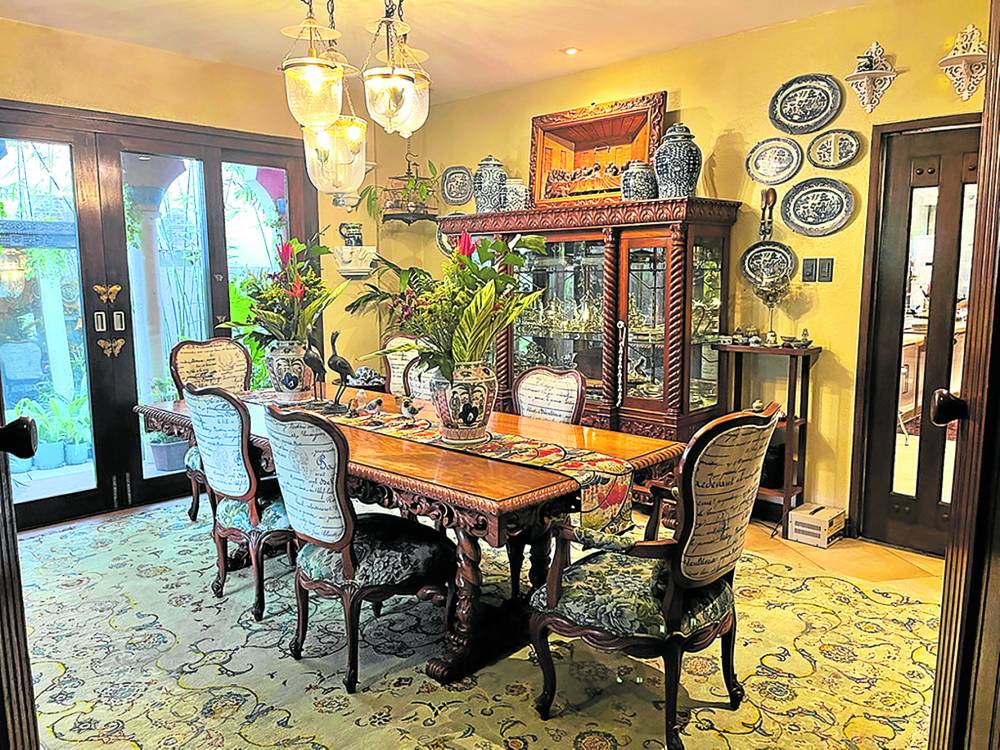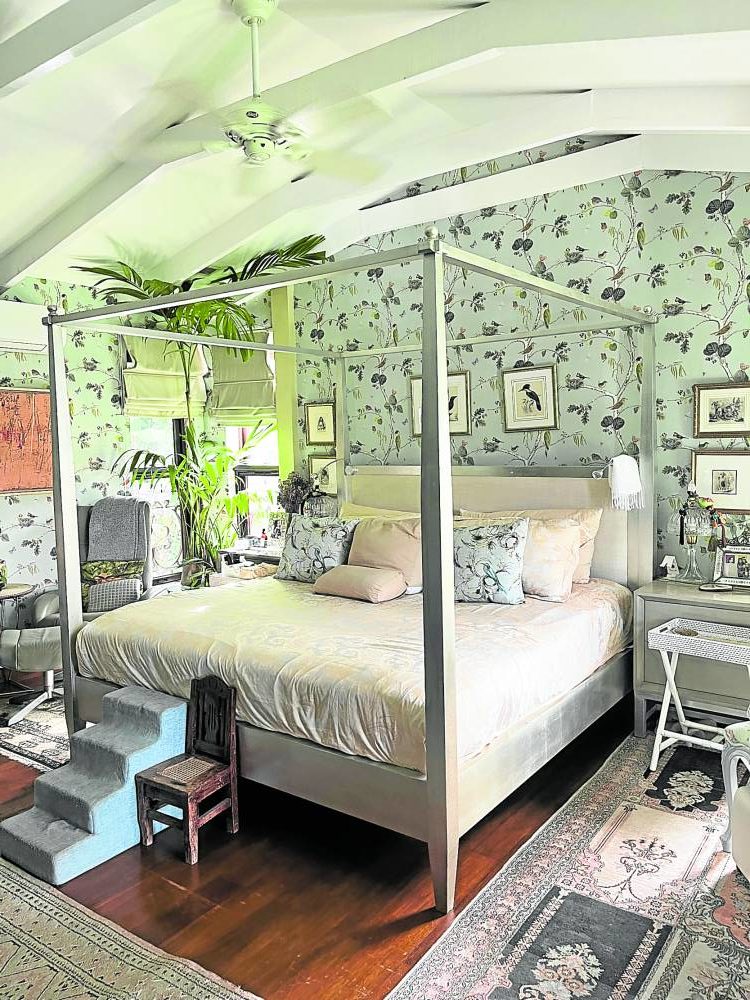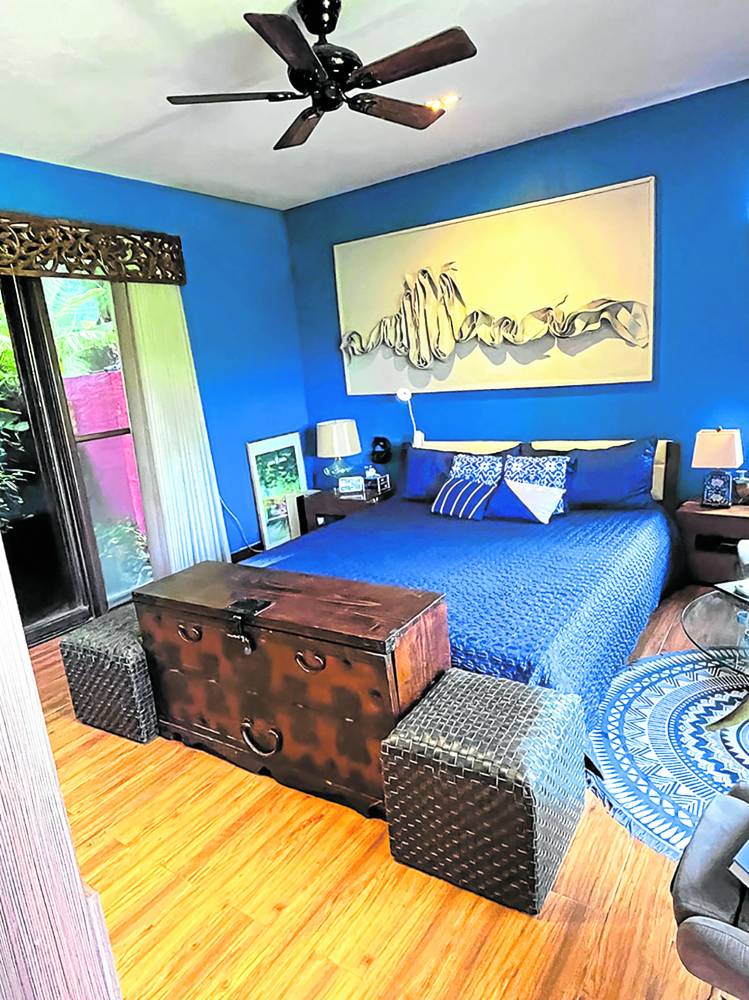
The homemade, plant-based merienda is laid out in all its glory—tortilla chips to go with the kale and cheese spread, artichoke dip, spinach with tofu, cauliflower rice, baked banana chips, nuts, mini pizzas and cheeses from sheep’s milk. The local touch, binignit (Cebuano version of ginataan), is served in elegant Oriental rice bowls.
Meanwhile, the nonvegans sip their Aperol spritz cocktails. The vibrant centerpiece, comprised of mountain flora and mini pineapples, brings joy to the antique table.
This is Cebuana style arbiter/socialite/hostess Margarita “Margette” Garcia Sarmiento’s version of a simple fare.
Her side of the family, the Garcias, are partners of the Aboitizes in Visayan Electric, the country’s second largest utility company. That family history is made known through the antique wooden cable spool once used for electrical wires that has been repurposed into a table in the Moroccan-inspired corner in the veranda.
Natural flair

Educated in England, Sarmiento returned to the Philippines and followed her passion. With her natural flair for decor, she opened her own design studio in Cebu which handled projects such as the Superferry 12.
Her residence, named Casa Ya (“home now” in Spanish), is a bright red block fringed with tropical flowers, perched on a knoll in Cebu’s enclave of old families. The house, which she designed, reflects her warm, convivial nature and femininity. Call it modern country style—the look is characterized by a mix of subtle hues on the walls combined with earthy tones and natural materials. Exposed wooden beams, architraves adorned with lalik (Visayan woodcarving) and heavy antique doors play against the vividly patterned tile flooring.
In the living room, rattan tub chairs and a dulang (antique low table), a rural relic, are put together with neoclassic and modern furniture that ultimately produce a relaxed and informal style. Vintage Korean cabinets and curvaceous hand-cut and etched mirrors lend history throughout the house.
The classic dining room is furnished with a family heirloom table surrounded by traditional chairs and a huge display cabinet made by Puyat, a famous midcentury manufacturer. Indonesian and local lamps add to the Old World ambiance.
Rustic touches

The kitchen has rustic touches of farmhouse shelves, juxtaposed with antique Chinese wooden panels that hide the electrical outlets and vintage display cabinets for Sarmiento’s penchant for ceramics by Japanese artist Akira Satake.
Casa Ya’s country style likewise features other collections of Oriental porcelain plates, celadon and pottery. Floral prints, checks and stripes, juxtaposed with Oriental rugs, lend a European touch.
As in most modern country-style homes, outdoor living plays a significant role. Glass doors open to garden views. At night, the scent of the damas de noche waft in the air. Before entering Sarmiento’s bedroom, the visitor will be arrested by the sight of the balcony, painted with bold red walls and lined with patterned tiles. The walls are enlivened with her plant collection of herbs and creepers.
Sarmiento then brings the outdoors inside her bedroom with a wallpaper of birds and foliage. The focal point is a pewter-colored four-poster bed, juxtaposed with a vintage Korean chest with birds fashioned from mother-of-pearl and gold trimmings. Antiquarian prints and paintings of women are spread out throughout the house.
Although it offsets the romantic look of the room, the painting by abstract expressionist Sio Montero unconsciously tells the story of Sarmiento’s life. The owner was attracted to the old rose background and the splatters of red which were emblematic of her courage, joy, love and the challenges in her life. Casa Ya can also mean her state of mind today. Its homonym, kasaya, is the Filipino word for happiness. —CONTRIBUTED








































